“The Roof Kept Leaking, the Mold Kept Spreading and the Kids Kept Freezing”
Why thousands of Russian schools in the 21st century have modern computers — but no central heating or functioning toilets
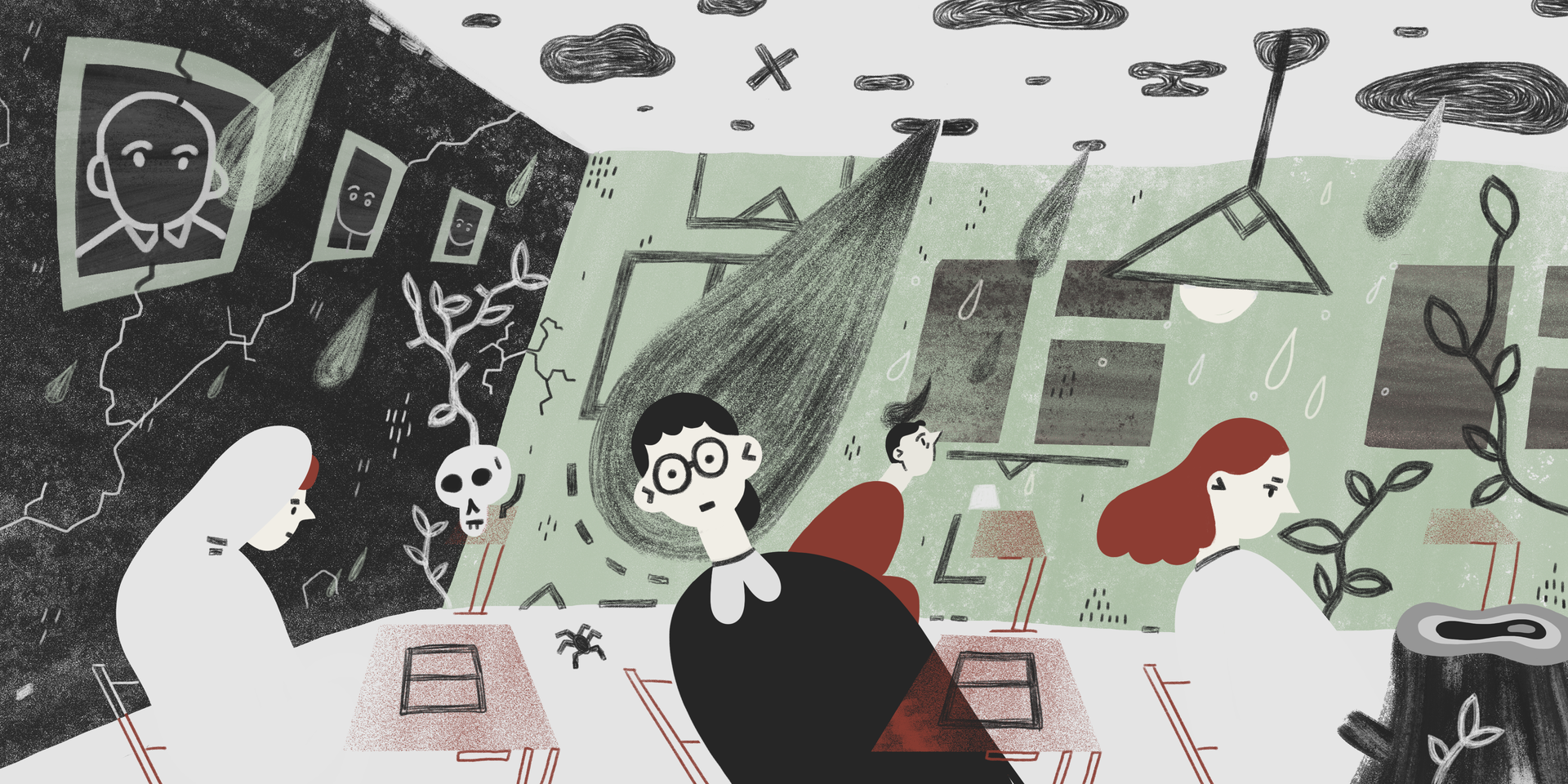
Alil Magomedov is the principal of the Vikhli village school in the Kulinskiy district of Dagestan. One of the school buildings was constructed back in 1928. Now the building is considered dilapidated beyond renovation. Others are also in a bad shape: peeling stucco here, a broken ceiling support beam there; a sizable wall section in one of the buildings simply collapsed in the summer of 2019.
“They started building the [new] school back in 1980, didn’t finish it, then made another attempt and finally started construction again in 2009,” says Magomedov “According to the latest construction project, [the new school] was supposed to have room for 340 day students and 50 boarding students. They put in the foundation and the walls and finished the gym hall. But then the contractor died, his firm went bankrupt and now the construction has been stalling for more than 10 years. I’ve tried to appeal to all possible authorities, but now they are saying the construction project no longer satisfies the new and updated safety requirements. So they plan to start from scratch — again.”
The construction is due to start this year. Meanwhile, the principal, with the help of teachers, is trying to renovate old buildings: “Entrances, exits, window openings — everything is dilapidated. The buildings are beyond capital renovation and ought to be demolished. I’m trying to repair the ceiling with whatever funds are allotted to us. But the rest — the floor, the walls — would cost huge sums of money that we simply don’t have.”
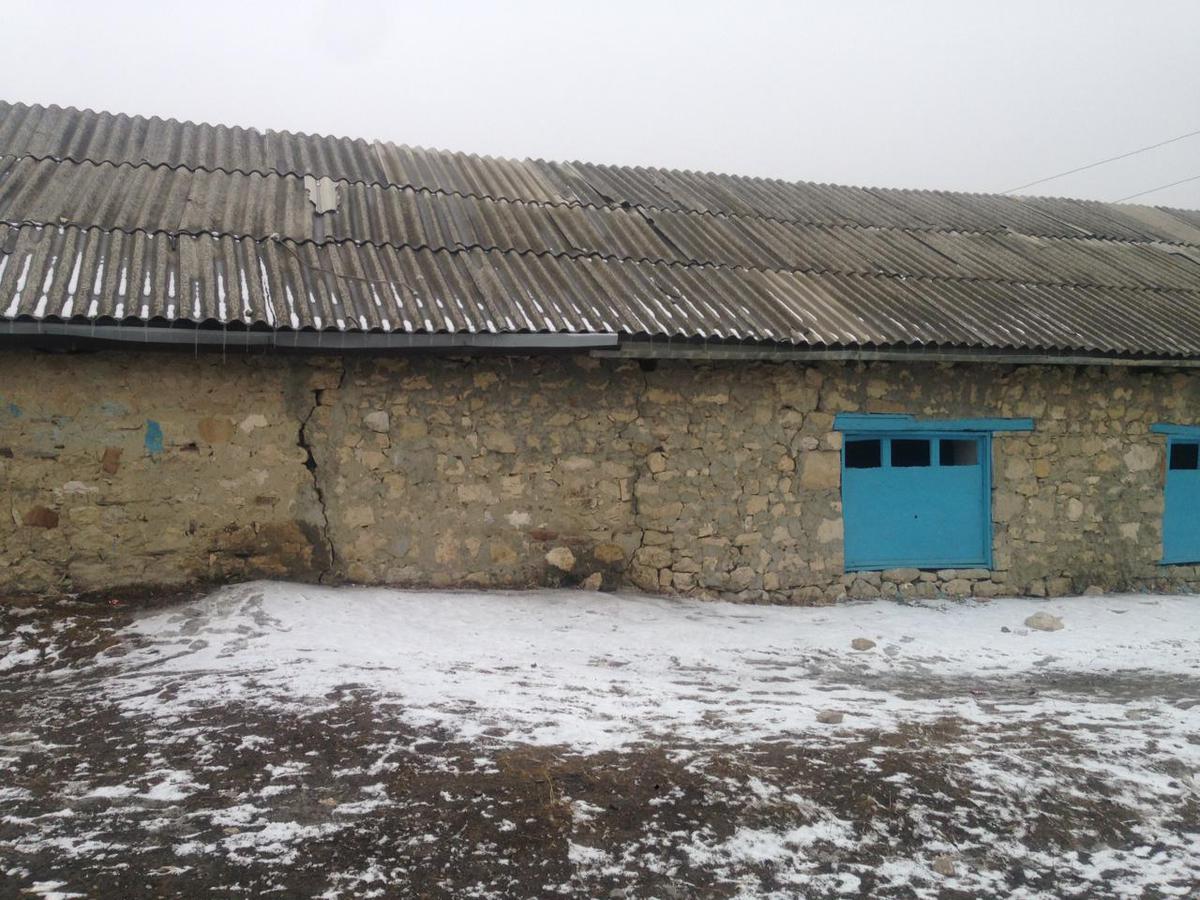
There is no central heating in the school, so the staff has to burn wood. “There are potbelly stoves in every room, with pipes leading outside to prevent a fire hazard. We’re done all of this ourselves — who else is going to do it?” says Alil. But despite all his efforts, some problems persist. “The entrance doors [in the school] are supposed to open outward. But ours open inward, and there’s no way to fix it. Because of this, we’re fined regularly — either by sanitary inspections or by fire inspections. Only by law they cannot fine the institution itself — they have to fine the person in charge, the principal. Which means I am the guilty party and I have to pay the fine from my own pocket.”
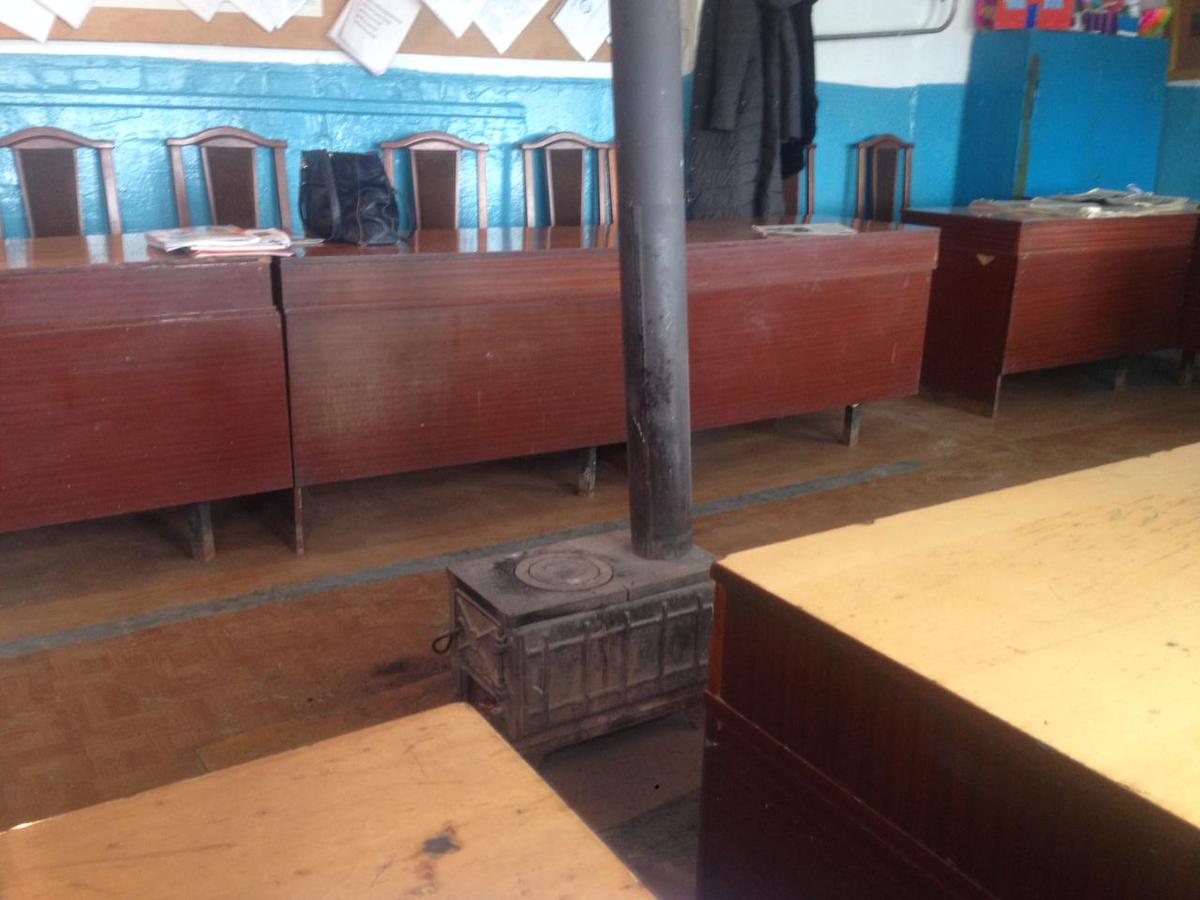
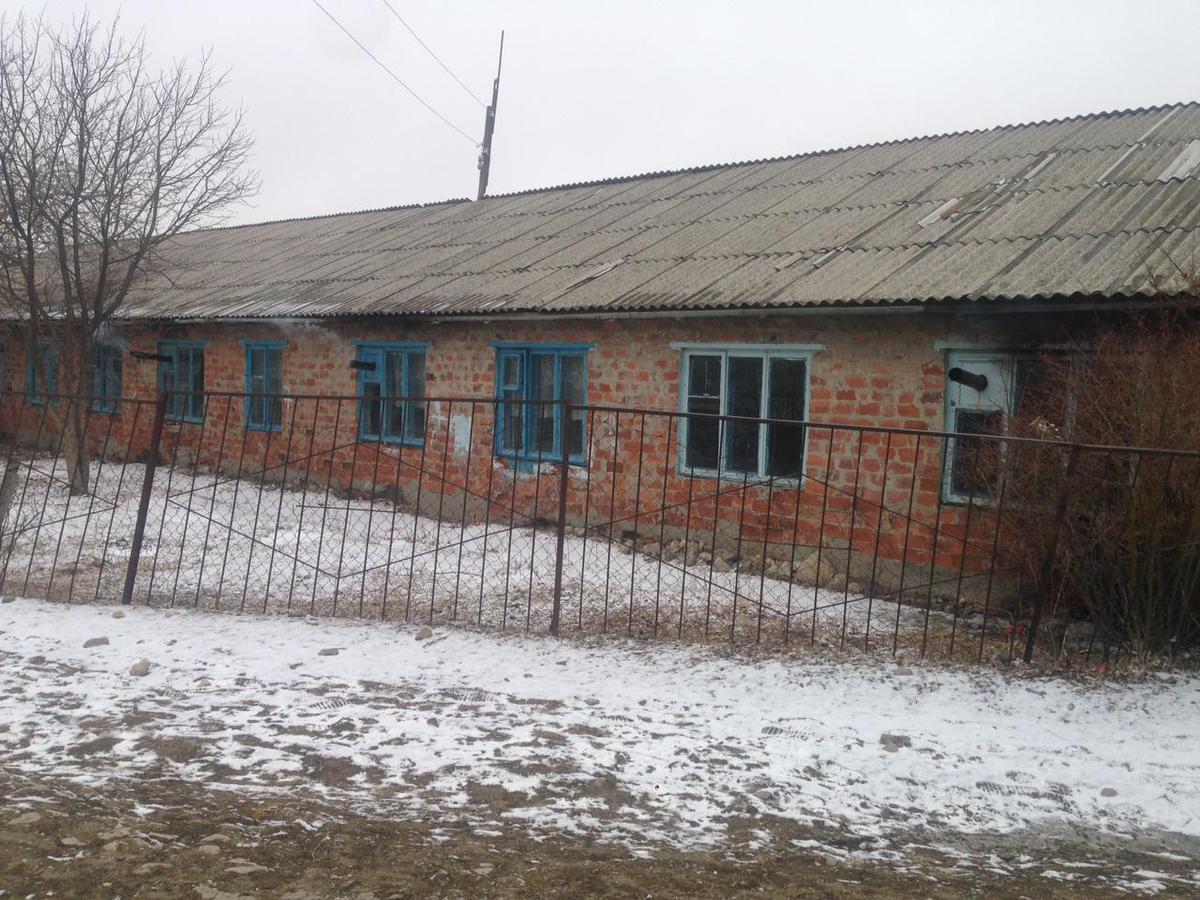
Before, children from the neighboring villages came to the Vikhli school, because only here they could finish all 11 grades of high school as boarding students. Now the school has no board, and the kids from other villages have stopped coming. They finish 9 grades of education in their village schools and then leave for vocational schools in the cities: there is now no way for them to complete high school education near their home.
The Republic of Dagestan is one of the most ailing Russian subjects when it comes to school poverty. More than a third of hazardous school buildings are in Dagestan. 1 in 14 educational buildings in the republic are slated for demolition, but the rest aren’t faring much better. 35 % of school buildings require capital renovation, more than half operate without any plumbing or sewage systems.
“Quality of life standards”
In February 2019, in his address to the Federal Assembly, Vladimir Putin claimed that more than 200,000 Russian children attend schools “that have no adequate heating, plumbing or sewerage”, and demanded a “complete solution” to the problem in two years.
According to the Ministry of Education’s statistics, in 2019 more than 6,000 school buildings didn’t have even the basic amenities. 1 building out of 9 did not have a sewage system, 1 out 11 did not have central heating, and 11 % of the buildings required capital renovation (the statistics are compiled by school buildings, not schools themselves, because different buildings of the same school can be in very different conditions - Ed.)
School principals are required to make yearly reports on the material and technical equipment of school buildings. This data is compiled in regional spreadsheets as well as the federal spreadsheet that encompasses all regions, and published on the Ministry of Education’s website. In our calculations, we used only data for general school education institutions.
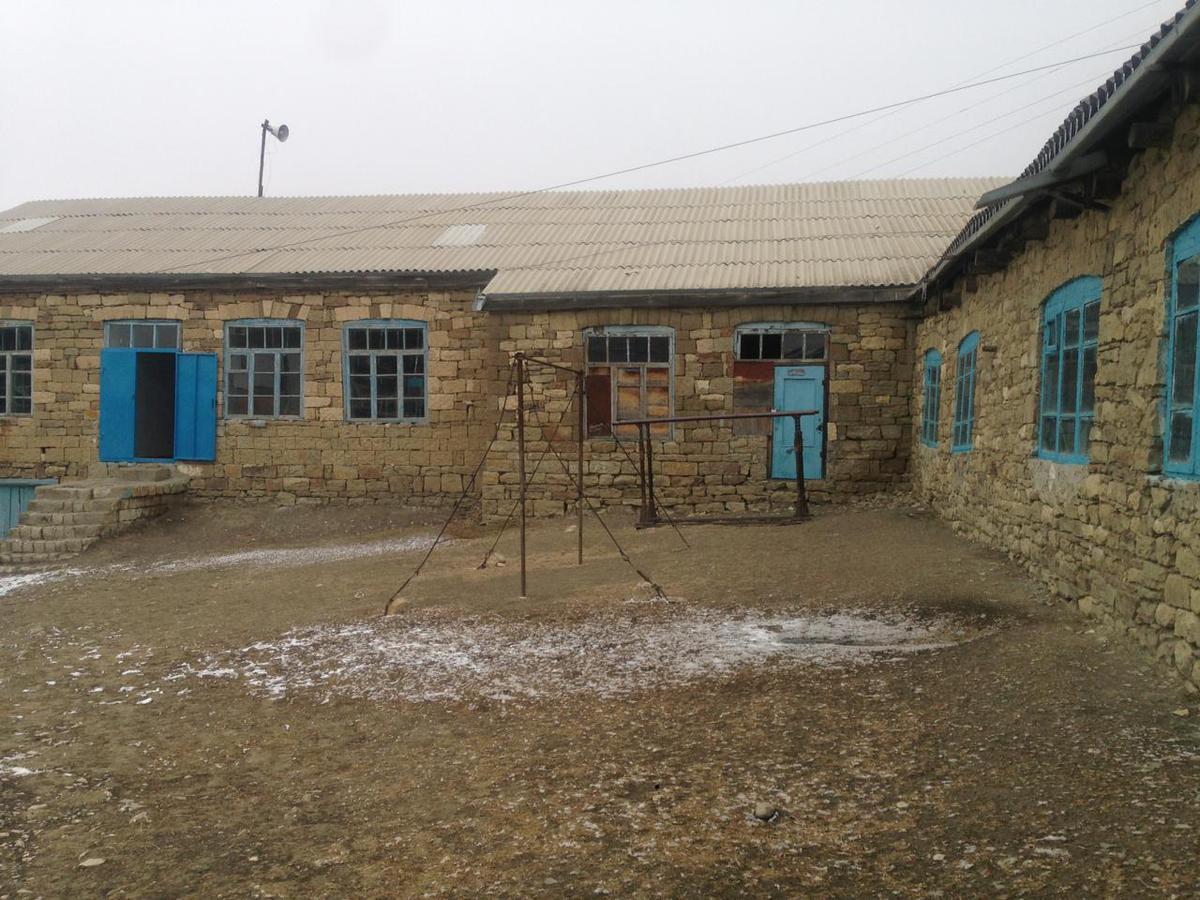
According to Irina Abankina, the director of the Education Development Institute of HSE University, quality of education is important, but so are school facilities: “The school sets the quality of life standards and it should be at least half a step ahead of the rest of the city or village in that regard. Kids spend a lot of time at school. They should have access to the amenities of civilization: healthy meals, toilet stalls with doors, where children conduct their business in private. But when a toilet [looks] like an outhouse, it’s simply not acceptable.”
In ten Russian subjects more than 20 % of school buildings don’t have any sewage system. In Tyva, Dagestan, Yakutia, Zabaykalsky Krai and Kalmykia this figure exceeds 50 %. At best schools use septic tanks, at worst — outdoor pit latrines. The most problematic region is Tyva: only 37 % of buildings have a sewage system.
More than 6,000 school buildings in Russia function without central heating. A quarter of them are in Dagestan, Irkutsk Oblast and Bashkortostan. In relative numbers, things are the worst in Kalmykia: there are few schools in the republic, but only half of the buildings are equipped with central heating.
More than 7,000 school buildings in Russia are in need of capital renovation. In Sevastopol, North Ossetia and Magadan Oblast more than half of school buildings require capital renovation.
The rules for submitting school equipment reports say that the buildings using anything except stoves for heating should be filed under the “centrally heated” section. The resulting statistics show that in Kalmykia, for example, half of the school buildings are heated by stoves. But in 2019, the Kalmykia branch of Rospotrebnadzor (the Russian Federal Service for Surveillance on Consumer Rights Protection and Human Wellbeing — Ed.) reported that only a single school in the region actually used stoves for heating. Tatiana Mertzalova, an associate professor of the Education Institute of HSE University, offers two possible explanations for this discrepancy:
— the school staff tasked with filling out the reports are not necessarily aware of all the technical intricacies involved, so they don’t consider schools that use, for example, individual boilers as “centrally heated”;
— regional authorities do not like to publish unflattering reports with high numbers of stove-heated schools, so they may try to obscure that fact. For example, a school stove might be listed as a boiler in the official report.
“They covered the rotten floor with a piece of new linoleum”
Many problems with the school equipment simply cannot be measured in numbers. Mold and fungus on the walls, rotten floors, leaking roofs and school desks ready to break apart do not make it into statistical reports.
Elena Gorshkova’s children attend the 4th and 8th grades of Novocherkassk school #22 in Rostov oblast. Primary school where her younger son studies is located in a former kindergarten building. Two years ago the classroom was in a horrible state: linoleum on the floor split at the seams, revealing rotten chipboard beneath. In an adjacent wing, entire walls were pitted by fungus, the roof was leaking, several classrooms were so cold that teachers had to use electric heaters, increasing the risk of fire hazard. In the middle school building, which is attended by Elena’s daughter, a styrofoam slab and a big piece of stucco once fell from the ceiling during class. No one was seriously hurt and only one student got a glancing blow, but after the incident Elena and other parents began actively seeking solutions to the school’s problems. “We kept silent before because the school staff told us: ‘The buildings will be renovated in a year or two. Let’s have some patience.’ But I’ve been hearing these promises for seven years,” says Gorshkova.
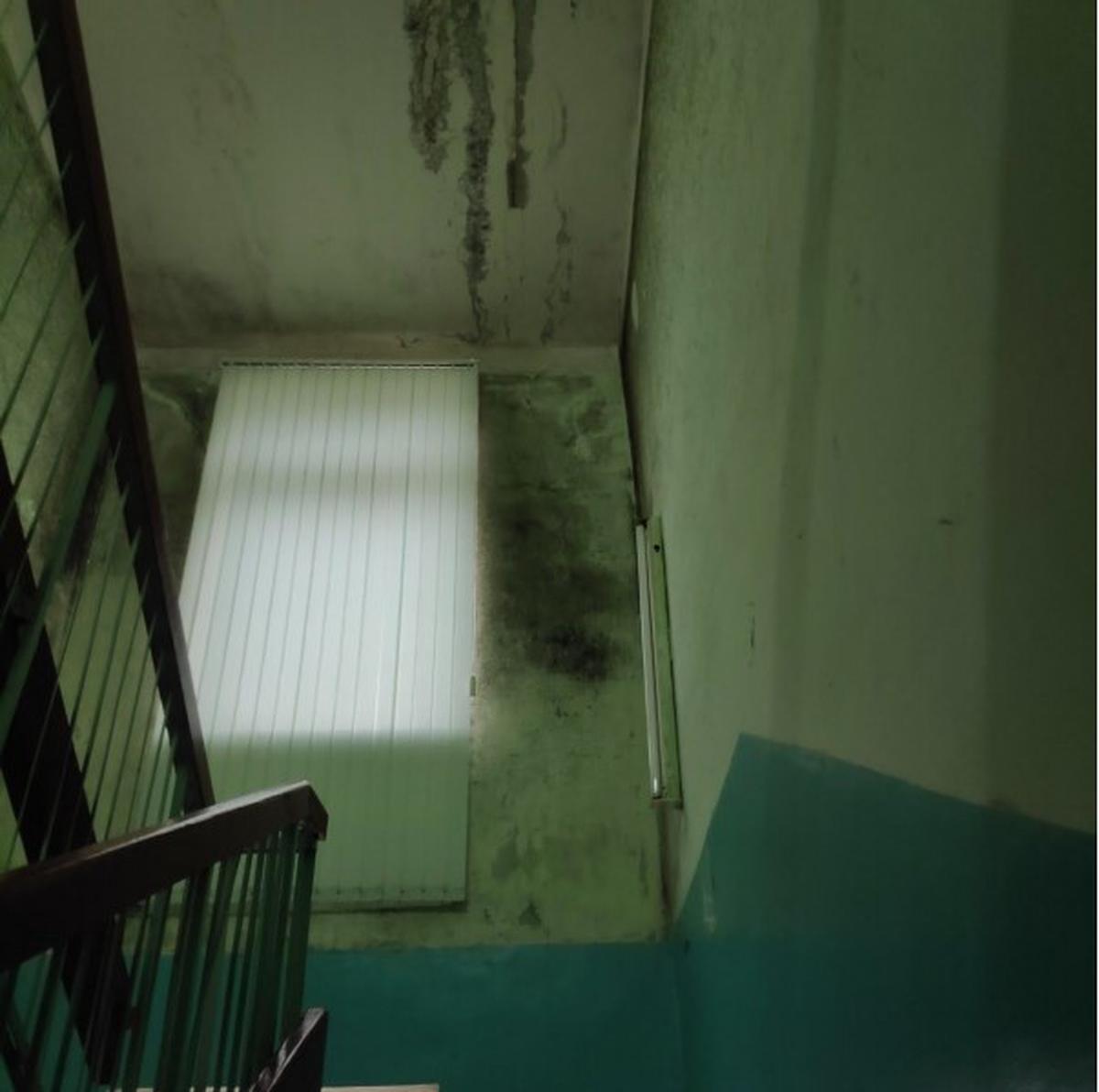
In the spring of 2019, the parents managed to organize a meeting with the head of the city education department, dedicated to capital renovation. “She gave us this big 40-minute lecture. Told us about the education successes in the city, then switched to budgetary constraints. She said that even small problems like replacing a lightbulb or a broken faucet had to be addressed through [public procurement] tenders,” recalls Elena “I understand that a department head might not have a big influence in the city, especially with no money in the budget, but we offered to send our appeals to regional or federal authorities. She told us that there was no point because the appeals would be handed down to her to deal with, and ‘nothing would come of it, except more headache for the city officials’”.
Nevertheless, after the meeting, the parents sent several complaints to Rospotrebnadzor and the Presidential Office. “After we complained, there really were some improvements. For example, they covered the rotten floor with a piece of new linoleum, scrubbed fungus off [the walls] with the help of parents, but the capital renovation didn’t start, the roof kept leaking, the mold kept spreading and the kids kept freezing,” says Elena.
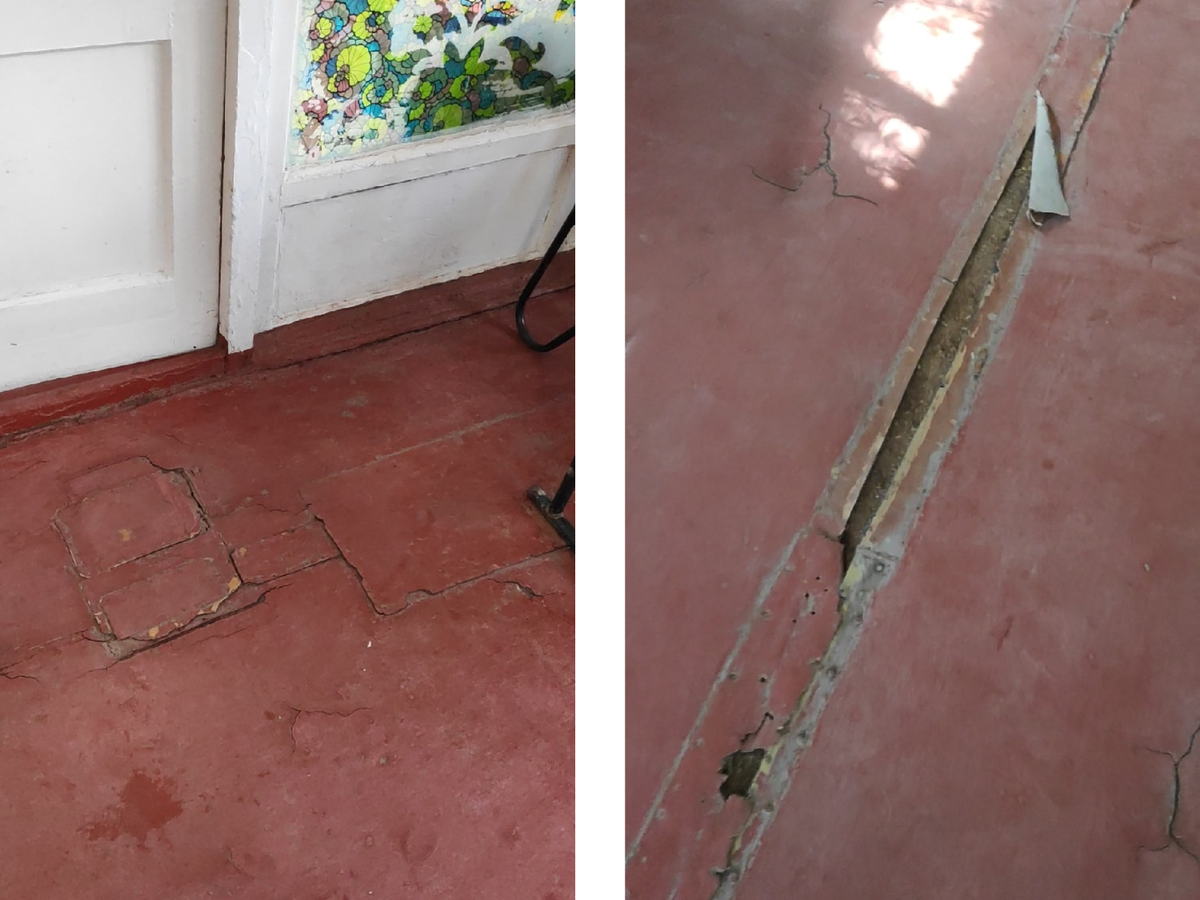
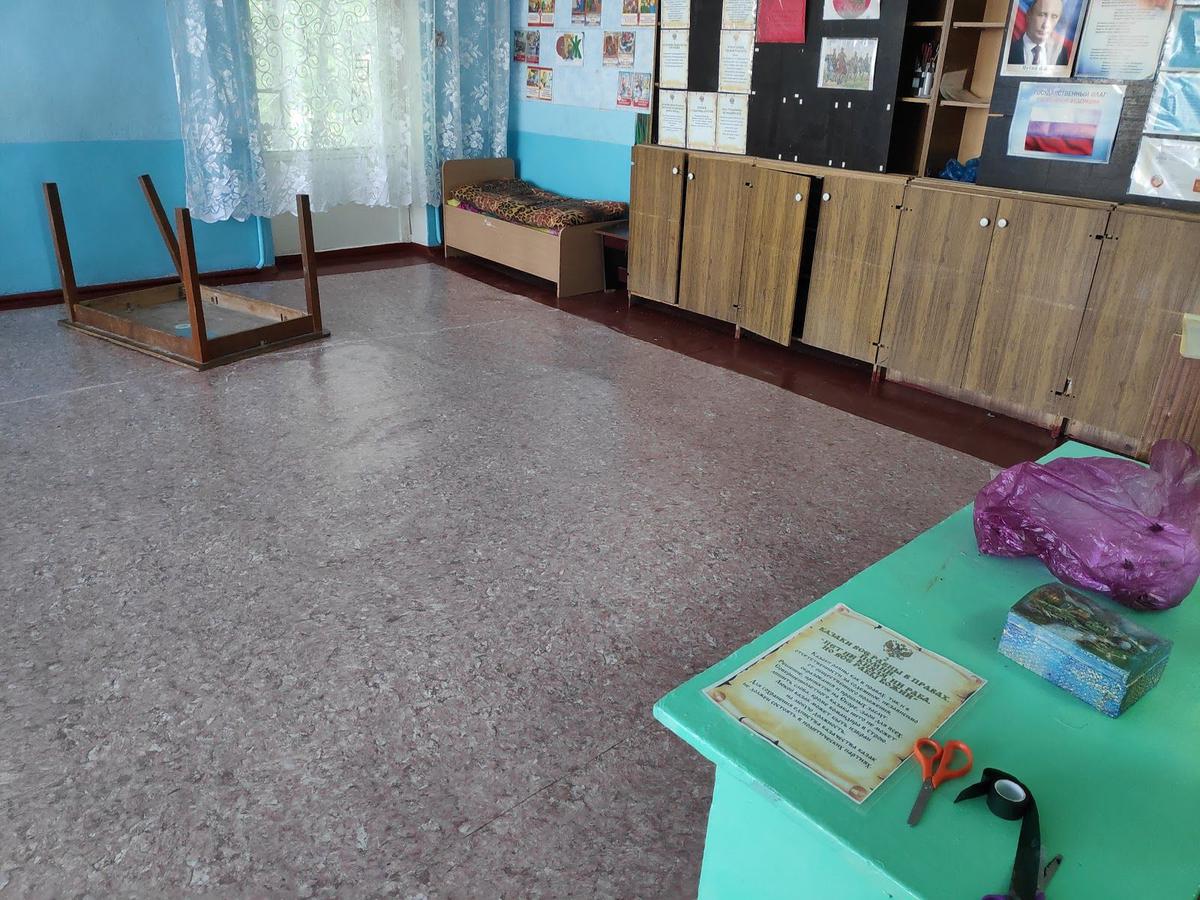
In the summer of 2020, the parents of the children attending school #22 filmed a video about the conditions their kids are forced to study in, and the video was signal-boosted by an inter-regional union “The Teachers’ Alliance.” The city administration of Novocherkassk responded with a news post on their website that said: “The video is a distortion of basic facts. The problems depicted therein occurred at different times, and school administration always reacted to them and took measures to address them.” Several days later the parents came to the school again and filmed another video. “This time we went everywhere, into locked classrooms we weren’t admitted to before. We scoured the entire building and saw all these horrors – I simply never noticed them before. Cracks in the walls running from the foundation to the roof. And the mold was still there, no one had even started to remove it,” recalls Elena Gorshkova.
The parents finally managed to arrange another meeting with the school principal and city representatives. “We came with a deputy of the city Duma, and the head of the education department summoned another two deputies to her help,” says Gorshkova. “The meeting was right before the elections, so they came to political squabbling. In the end, we couldn’t come to any agreement. The department of education promised the parents to renovate the school in 2023, even though last year they were promising to renovate it in 2022.”
“We don’t know how much time the school has left”
Village under-filled schools are facing equipment problems (a school is considered “under-filled” if it has 30 to 40 students, and sometimes even less. These schools are located in small settlements. There are few teachers in under-filled schools, so they often teach to several groups of children at once - Ed.). Many of these schools were built back in the first half of XX century, and saw little to no renovation since then – the government isn’t interested in spending money on schools with few students.
Feoktistova
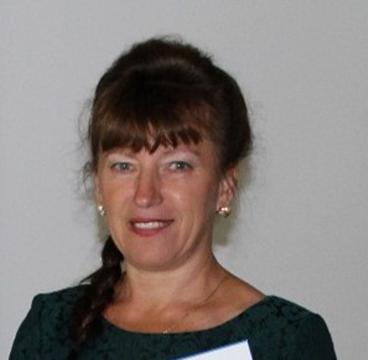
Tatyana Feoktistova is a teacher and a former headmaster in the Egorovo village school, in Nizhegorodskaya oblast. The Egorovo school is attended by 33 children and is considered under-filled. According to Elena, the school never received money for capital renovation because of that. “The building is dilapidated, it was constructed in 1957. We need to change window frames, replace the heating system. I have been writing to the department of education every year, asking for renovation money, but the school never received any. On the one hand, it’s entirely understandable that the government doesn’t want to spend money on a school that has no future (because families are leaving villages and there are fewer students every year – Ed.) On the other hand, we don’t know how much time the school has left, and of course, it’s not very comfortable to study in such atrocious conditions.”
In the last few years, the number of school buildings lacking either sewerage, plumbing, or central heating, has been decreasing. But this decrease is not due to a concerted renovation effort, but because the dilapidated buildings are being closed. In 2018, for example, the number of buildings that had no plumbing decreased by 1426. At the same time, the number of buildings with plumbing went up only by 467. This means that at least 959 buildings without plumbing are now closed and not used by schools anymore.
According to the Ministry of Education statistics, the number of school buildings in Russian villages decreases almost by a thousand every year. New village schools are not being built, because the government contractors see no profit in it. “The government actually wanted to partner with private investors to build new schools. Prominent experts of VEB.RF, VTB Bank, Sberbank, Prosveshcheniye publishing house came up with several options. They understand that new schools have to be attended by 800 to 1200 students in order to turn a profit. They should be high-cost projects, with additional courses, with demand for specialized and continuing education. The investors are simply not interested in small village schools,” says Irina Abankina.
“Students and teachers constructed the warm toilet in the old cafeteria building”
Every school year, before the classes start, all Russian schools undergo a so-called “acceptance inspection.” Experts from the Ministry of Internal Affairs, the Ministry of Emergency Situations and the sanitary control service check if the school is ready to accept students. If there are any violations, the experts issue warrants to rectify them and set terms for warrant execution. No additional funds are allocated to schools to help them comply.
Tatiana Egorova, the ex-headmaster of the Egorovo village school recalls that due to insufficient funding from the government, teachers and students took it upon themselves to execute the warrants. “Every school needs a fence – so we asked a [local] businessman, he provided us with materials, and we built the fence together with the students, during the summer labor school. The first warm toilet was also constructed by teachers and students in the old cafeteria building. It was in 2009 or in 2010 when [every school] was suddenly required to have a warm toilet, The principal said: “Let’s build it”. We dismantled the walls and the floor, poured in the concrete and built it,” says Tatiana.
Irina
Abankina
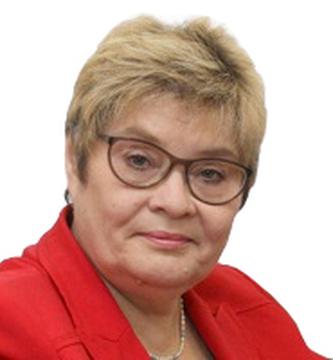
The law actually prohibits schools from utilizing the labor of children, their parents or teachers and receiving renovation money from parents, but often it is the only way to achieve something, according to Irina Abankina. “The government often issues ridiculous requirements that schools have no funds and never had funds to comply with. The principal faces a dilemma: either the school doesn’t open for another year, or he signs the warrant and tries to comply with requirements. The latter means the school stays open, but the principal is forced to beg the authorities for assistance or ask parents for money. If the warrant remains unresolved, the principal is fined. If there are two unresolved warrants, [the school] risks having its license revoked by a court. The teachers do a lot of repairs themselves. They shouldn’t be doing it but they have no other choice: either you fix it, or your school gets closed and you’re out of work”.
“With federal toilet program everything would be moving along faster”
The Lyaskelya village school in Karelia is a match for many city schools when it comes to educational equipment: interactive sensor boards in classrooms, modern computers, good gym equipment. But the school restrooms have holes in the floor in place of water closets and a literal cesspit in place of a sewage system. The reason for this contrast is mismatched sources of income. “The money for educational equipment comes from the federal budget, but the money for building maintenance comes from the local budget. And we all know local budgets don’t do that well,” says the school principal Olga Kuzmenko.
The school building was constructed in 1975; back then the cesspit was thought of as a temporary fix. The local paper factory was supposed to sponsor the construction of a sewage system for the entire village. But the factory went bankrupt in the 1990s, and the school cesspit has been in use for 45 years.
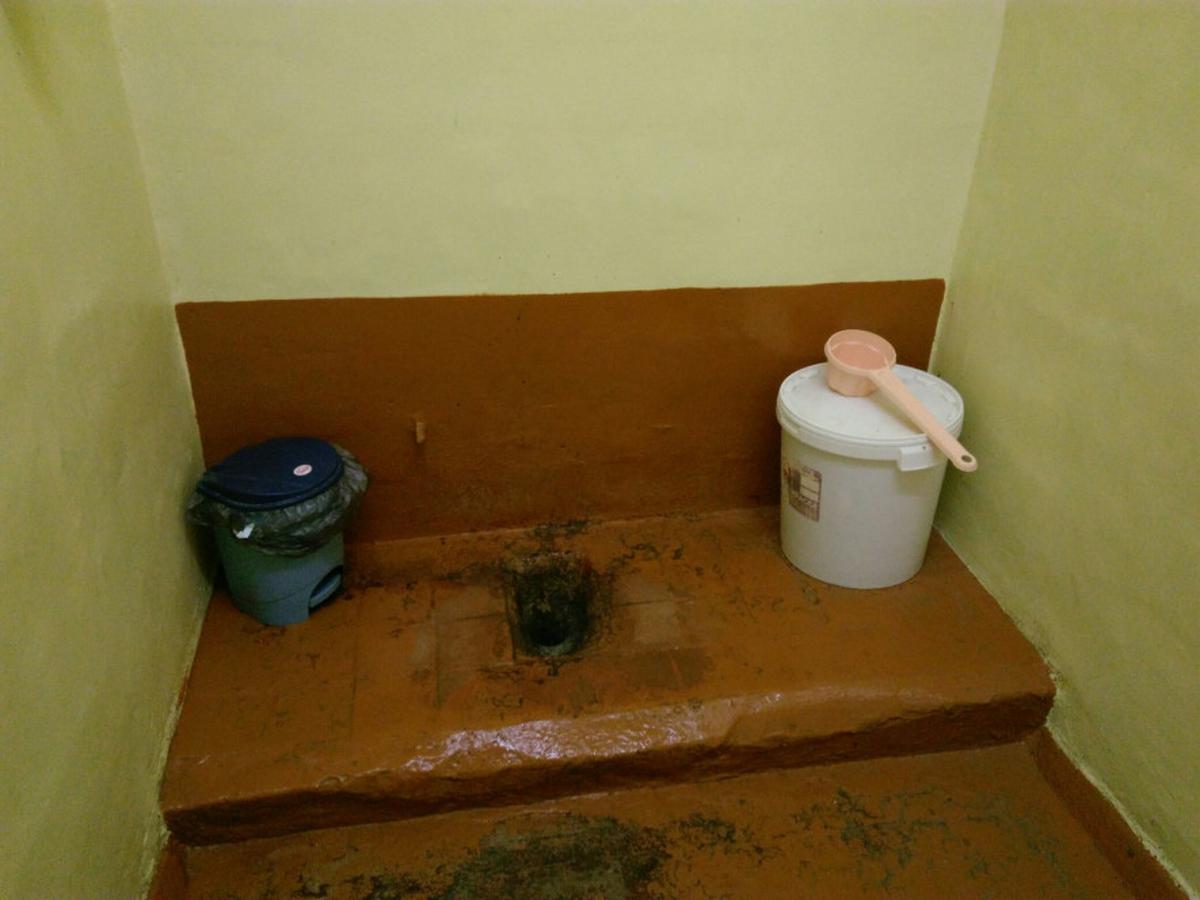
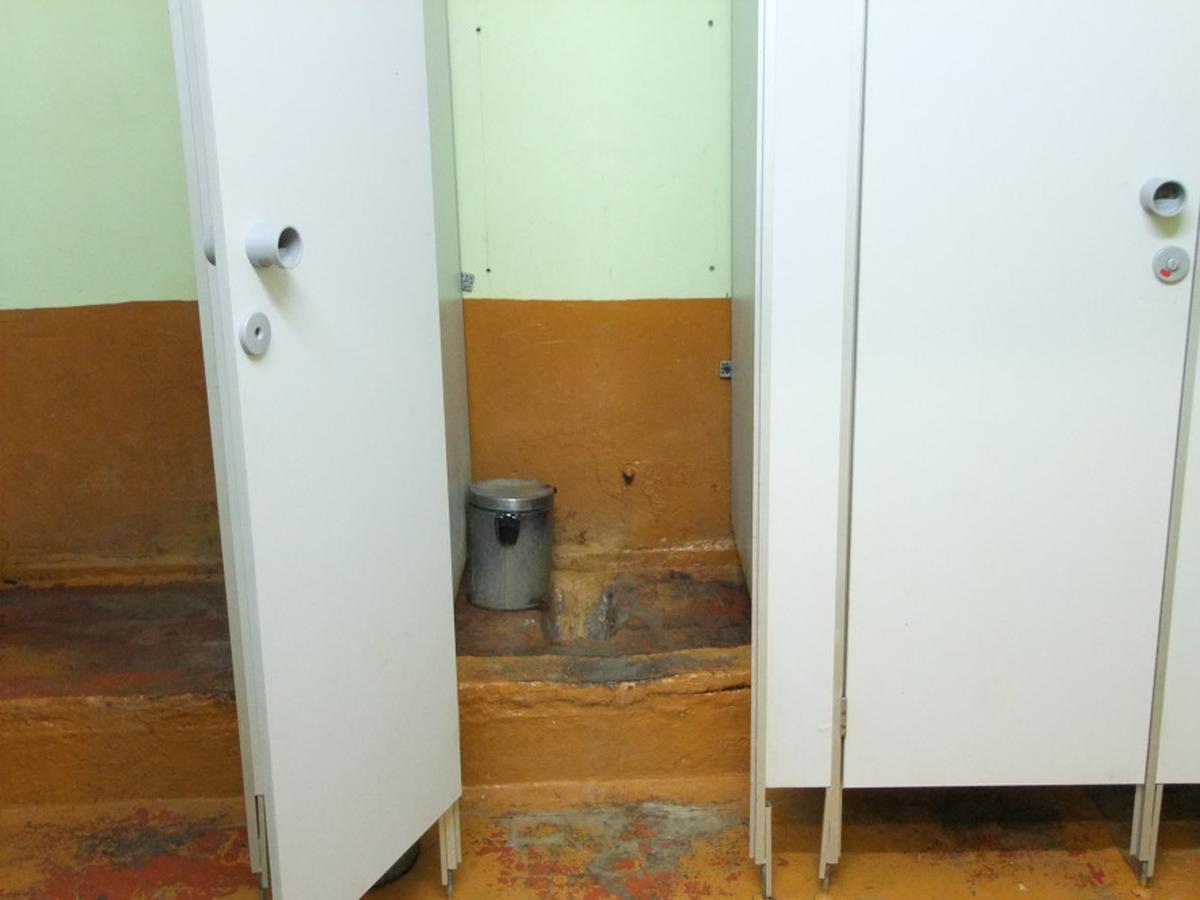
“The cesspit should be regularly emptied, but its walls have fallen into disrepair. The liquid fractions seep out through the wall cracks, and the solid fraction sediments and petrifies. We cannot vacuum it all out, so the smell persists,” says Olga Kuzmenko. “I have been the school principal for 28 years and I accomplished a lot, but I cannot solve this problem. We tried to appeal to all possible authorities: the local legislative assembly, the head of district administration, the Ministry of Education. The parents tried to talk to journalists. We knocked on every door, but unfortunately, the doors remain closed.”
Irina Abankina of HSE explains why it’s easier for schools to get new computers than to install a sewage system: “Russia has the federal digitalization program and it is moving forward at a very good pace. It is result-oriented, it allows the principals to manage the program funds on their own and tackle its goals step by step. If we had a federal warm toilet program, everything would be moving faster, too.”
Generally speaking, the federal law on education guarantees a certain administrative and fiscal freedom to schools. But in practice, school principals cannot allocate funds for maintenance and renovation. “These are not considered regular expenses, and when they receive a so-called targeted subsidy, they have to strictly adhere to its goals,” says Irina Abankina “If the region allocates money for educational equipment, the principals are welcome to it. They can spend it on digitalization, but not on the sewage system. The money for the sewage system is supposed to come from municipal budgets, not from educational authorities. But the schools receive no funds from the housing and utilities budget, no money from the municipal budget. So the principals have no means [to renovate school buildings or to install sewage or heating systems]. In this system school principals become hostages to insufficient school funding and their own lack of agency in allocating the funds.”
In the spring of 2020, the students of the Lyaskel school made a video about their learning conditions for the school TV station. The video shows the modern gym, a classroom with a sensory board — and then cuts to the restrooms and holes in the floor, the smell from which, according to students, is noticeable even outside the restrooms.
“When kids took it upon themselves to draw attention to the problem, they actually had greater success. The authorities began discussing solutions again, not only on regional, but also on the federal level,” says the school principal “I wish the solution meant a working sewage system both for the school and for the rest of the village. It has this semi-official nickname, “The Pearl of Northern Ladoga district”, and here we are, literally drowning in the feces.”
Editors: Alesya Marokhovskaya, Alexandra Zerkalyova